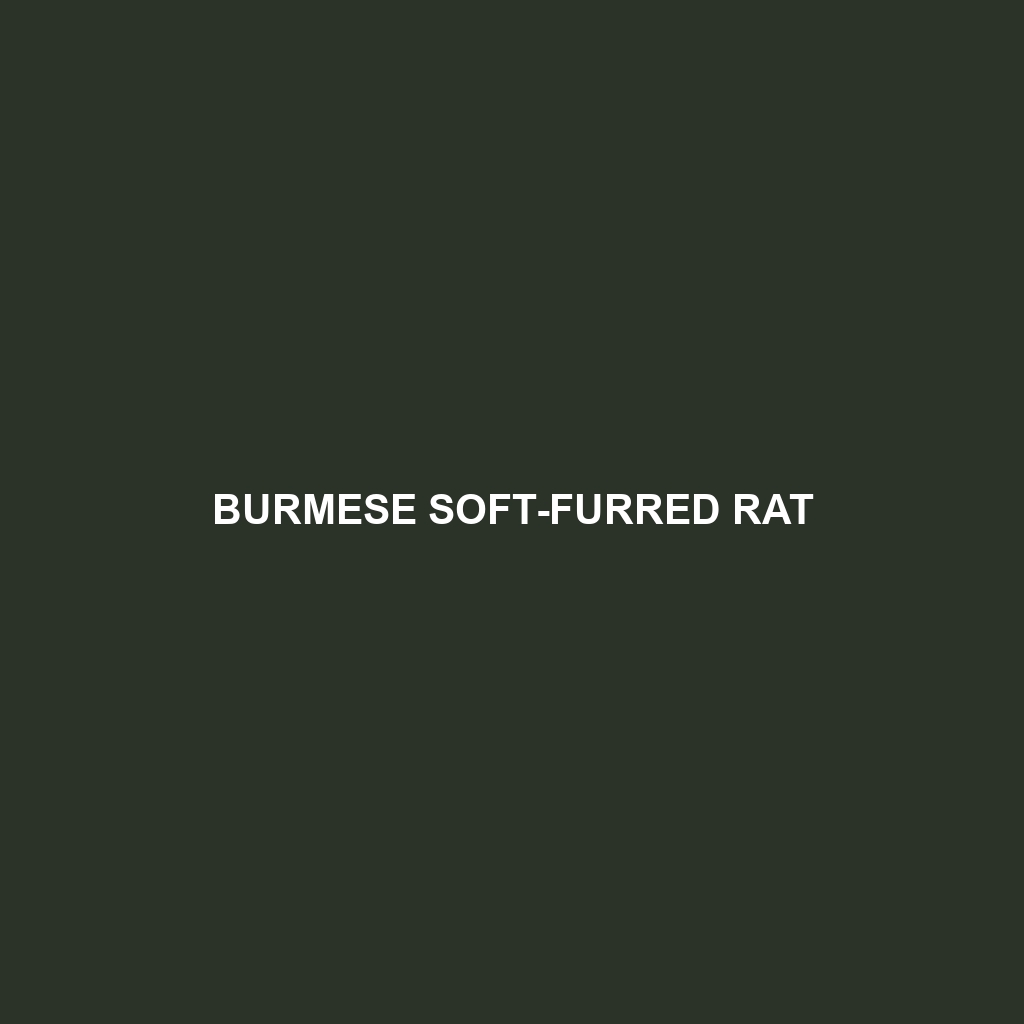Burmese Soft-furred Rat
Common Name: Burmese Soft-furred Rat
Scientific Name: Chiromyscus chrysoleucus
Habitat
The Burmese Soft-furred Rat is primarily found in forested regions of Southeast Asia, particularly in Myanmar (Burma). They thrive in dense, tropical forests and are often found in areas with plenty of underbrush, which provides both cover and food sources. This species prefers humid, moist environments, typically inhabiting the lower strata of the forest where they can easily navigate through foliage.
Physical Characteristics
The Burmese Soft-furred Rat is a medium-sized rodent, measuring approximately 20 to 25 centimeters in length, excluding its tail. Its coat is distinctive, featuring soft, dense fur that is generally a mix of brown and gray shades, with a lighter underside. Their bodies are slender with a long, tufted tail that aids in balance as they navigate through trees. The species has large eyes and ears, contributing to their enhanced sensory perception.
Behavior
Burmese Soft-furred Rats are primarily nocturnal, displaying crepuscular activity patterns where they emerge during the early evening and dawn. They are known for their agility, which aids them in foraging for food and evading predators. Socially, they tend to be solitary or live in small family groups, with marked territories. Their vocalizations include a variety of squeaks and chirps, especially during mating seasons.
Diet
These rodents have an omnivorous diet. They primarily feed on fruits, seeds, nuts, and roots, but will also consume insects and small invertebrates when available. Their feeding habits play a crucial role in seed dispersal within their forest habitat, making them important for the ecosystem’s health.
Reproduction
The Burmese Soft-furred Rat typically breeds throughout the year, with peaks during the rainy season. Females usually give birth to litters of 3 to 5 pups after a gestation period of about 4 weeks. The young are altricial, meaning they are born hairless and blind, requiring extensive care from the mother until they are weaned at around three weeks old. Parental care is notable, with mothers actively guarding and nurturing their young until they reach independence.
Conservation Status
Currently, the Burmese Soft-furred Rat is classified as ‘Vulnerable’ on the IUCN Red List. Habitat loss due to deforestation and agricultural expansion represents the primary threats to their survival. Conservation efforts are necessary to ensure the protection of their natural habitat and to mitigate the impact of human encroachment.
Interesting Facts
– The Burmese Soft-furred Rat is known for its exceptional climbing abilities, which it uses to escape from predators and navigate its arboreal habitat.
– This species is relatively uncommon in the pet trade, a fact that makes it less known compared to other more common rodents.
– Its unique fur texture sets it apart from many other rat species, making it a subject of interest for animal enthusiasts.
Role in Ecosystem
As a forager, the Burmese Soft-furred Rat plays a crucial role in its ecosystem by aiding in seed dispersal and serving as prey for various larger predators, thus maintaining the ecological balance. Its presence indicates a healthy habitat, as these rodents depend on rich biodiversity for their survival.
